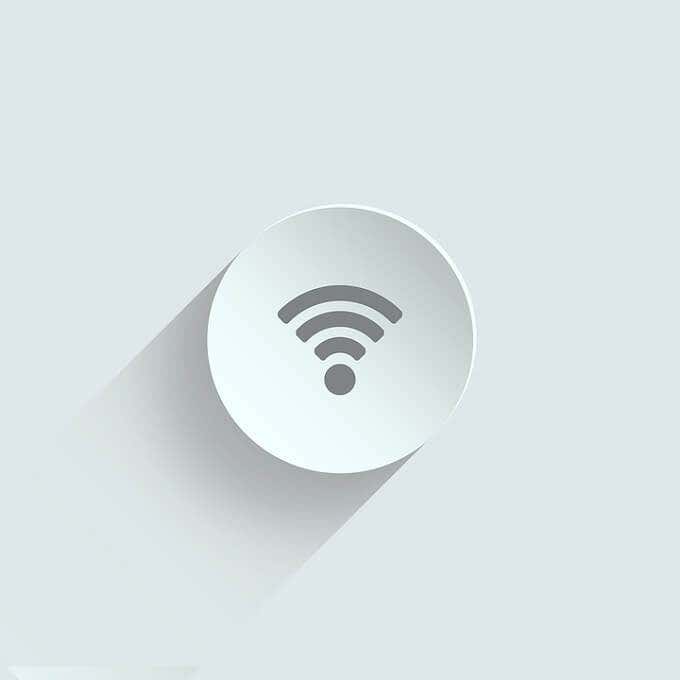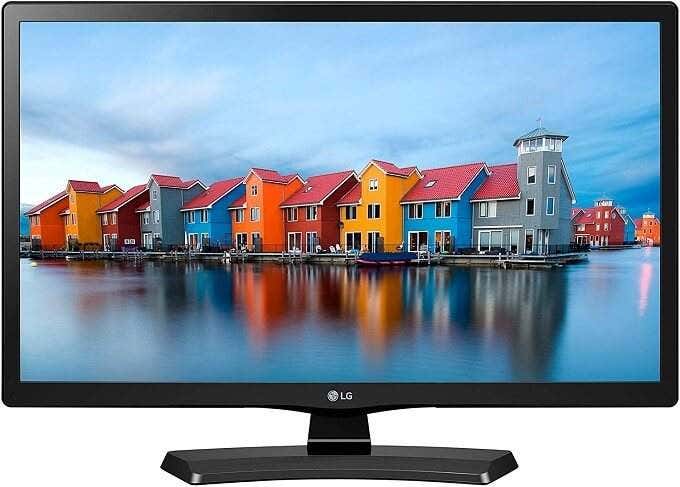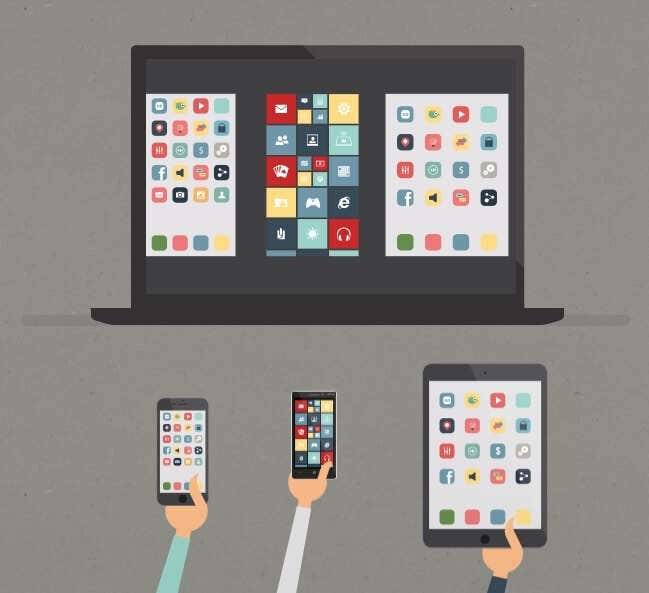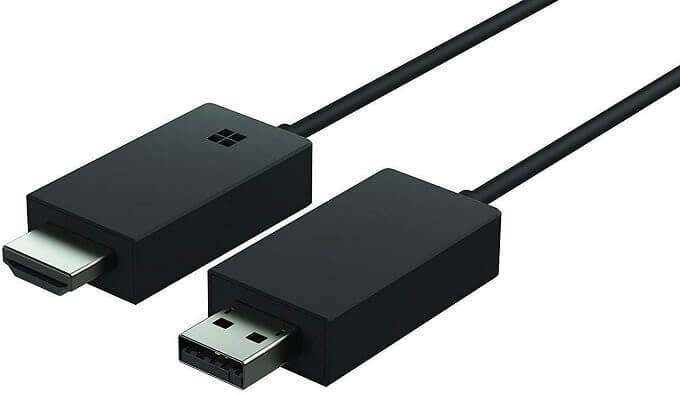Miracast is one of a number of wireless display standards. If you have a Miracast device and display, you can send a video signal from one to the other, without the need for a long HDMI cable.
Sounds pretty good right? The problem is that, in practice, Miracast is in competition with lots of other seemingly similar standards. This means that plenty of users are unsure of whether they can use Miracast or if it’s even the right wireless display technology to use.

What Is Miracast?
Miracast is a standard defined by the WiFi Alliance, which means that at its core, it uses WiFi technology. Specifically, it uses WiFi Direct, which creates a WiFi connection between two devices without the need for a router or other access point to play the part of middleman.
Over that wireless connection video data is sent in the H.264 format. That’s the most common HD video encoding standard today. Officially, Miracast supports resolutions up to 1080p, also known as “Full HD”. In terms of sound, the standard supports 5.1 Surround Sound as well.

If there’s a Miracast display in range, all you have to do is select it as a display and cast your media to it. The beauty of Miracast is that any two certified devices will handle all the under-the-hood details of the connection and you can just get on with your work or entertainment.
Who Are Miracast’s Competitors?
Miracast was released in 2012, but today there are plenty of alternative technologies. The two best known alternatives are Google Cast and Apple’s Airplay. There’s also Intel’s WiDi (Wireless Display) standard, which offers performance with potential for low-latency applications like VR (Virtual Reality). These standards are not interoperable. In other words, your Miracast device is not going to talk to an Apple Airplay device.

Sadly, years after Miracast was launched, we still don’t seem particularly close to having a single universal standard or wireless display technology.
Who Supports Miracast?
For a device to work with Miracast, it needs both the right hardware and software. So, although you may have a device that runs a compatible operating system, you also need the right silicon under the hood for it to work.
Miracast support has been built into Windows since version 8.1 and Windows 10 still supports Miracast as both caster and receiver.
On the Apple side of the computing world, you won’t find any Miracast support. macOS and iOS uses Airplay as the only baked-in choice. There have been a few software workarounds over the years,but in our experience these have been unreliable and performed poorly.

Linux support does exist, but there doesn’t seem to be any driven development behind it. MiracleCast and Wireless Display Software for Linux are the two oft-cited options here.
Android users get a mixed bag as well. For a time, MiraCast support was baked into Android itself, but from Android 6.0 onwards that support is gone. However, individual Android device makers can choose to put Miracast hardware and software support right back into those devices.
So if you want to know if your Android device will work with a MiraCast display, you’ll have to look at the documentation for that specific machine.
Miracast Devices

What sorts of devices are MiraCast devices? In principle any device that can generate video could potentially be equipped with MiraCast technology. In practice, it’s pretty much what you’d expect. Tablets, smartphones, laptops, desktops and other common computing devices can also be Miracast-certified.
Sometimes support for Miracast can be added via a software update later, but that would be up to the hardware manufacturer.
Miracast Dongles
What if you have a display that doesn’t have MiraCast support built in? The good news is that this is a pretty simple issue to solve and it doesn’t involve buying an entirely new display. All you need to do is purchase a MiraCast dongle and plug it into one of the HDMI ports on your display.
The really nice thing about this is that you can take your dongle with you, so that you can connect it to any displays at your destination. For example, you could hook it up to the company projector when you want to do a presentation and since MiraCast uses a direct connection you don’t have to worry about using the local wireless network.
Miracast Displays
Some displays have MiraCast hardware built right into them. This means you don’t have to do anything special in order to cast the image from a Miracast device. When in the vicinity of a Miracast display, it should show up in the list of available casting targets on the source device.
MiraCast Software Receivers

To be certified as a Miracast device means having both the right hardware and software resources on hand, but that doesn’t mean MiraCast solutions are always tied to specific hardware.
The best example of this is probably Airserver Universal for PC, an amazing piece of software that acts as a universal receiver for MiraCast, Google Cast and Apple AirPlay. That means you can install the software on a laptop, connect it to a projector or other large display, and mirror just about any device people show up with.
Is MiraCast Secure?
Pretty secure – about as secure as WiFi in fact. That’s because MiraCast uses the same security protocols as modern WiFi. This makes it pretty unlikely that someone will have the ability to snoop on the transmission remotely.

For 99% of all users the security built into MiraCast is just fine. If, however, you’re using it to present top secret plans to DARPA you may want to simply use an HDMI cable.
The Downsides Of Miracast
MiraCast is a pretty solid and simple to use screen-mirroring technology, but it does have a few serious downsides. For one thing, the standard doesn’t specify any sort of minimum latency standard. This means that if you have an application (such as a game or interactive demo) that needs low latency levels, there’s no guarantee your specific MiraCast setup will be good enough.

MiraCast also doesn’t have any support for audio-only applications either, so you can’t just send music or other sound information to a MiraCast receiver. Since most everything has Bluetooth these days, it doesn’t matter all that much. However, it’s a limitation worth knowing about.
The other major downside of MiraCast is that you can only use it to mirror a device screen. With AirPlay, for example, you can have the wireless display act as a second monitor rather than a mirror. This is useful both from a productivity point of view and from a presentation point of view.
Does Miracast Matter?
When Miracast was first released it felt rather revolutionary, but the fact is that Miracast has been overtaken by both AirPlay and Google Cast. Since the mobile device world has been so thoroughly split between iOS and Android, it seems that support for Miracast is a little lackluster.
If you already happen to own a Miracast device and have a display, there’s nothing wrong in taking advantage of it. However, unless Miracast receives a substantial upgrade, there’s no particular reason to seek this technology out either.
